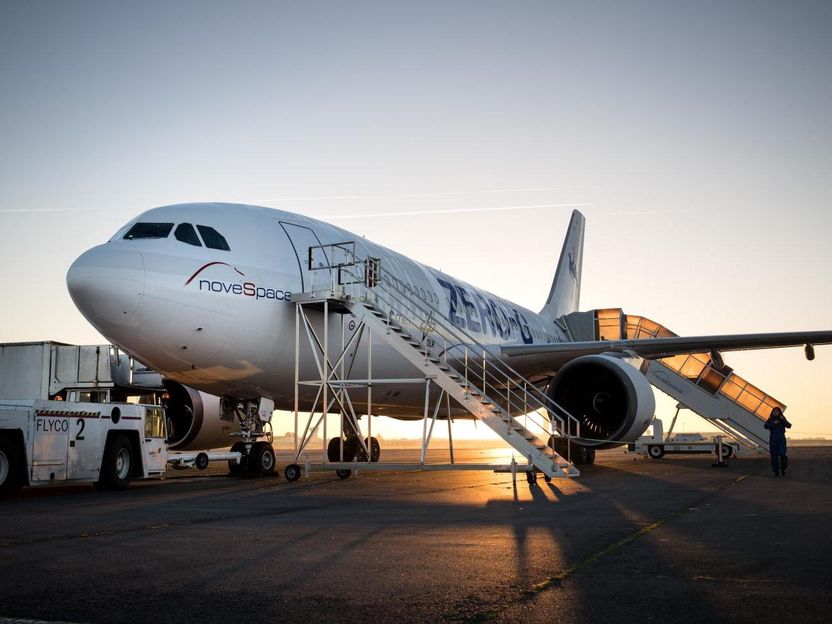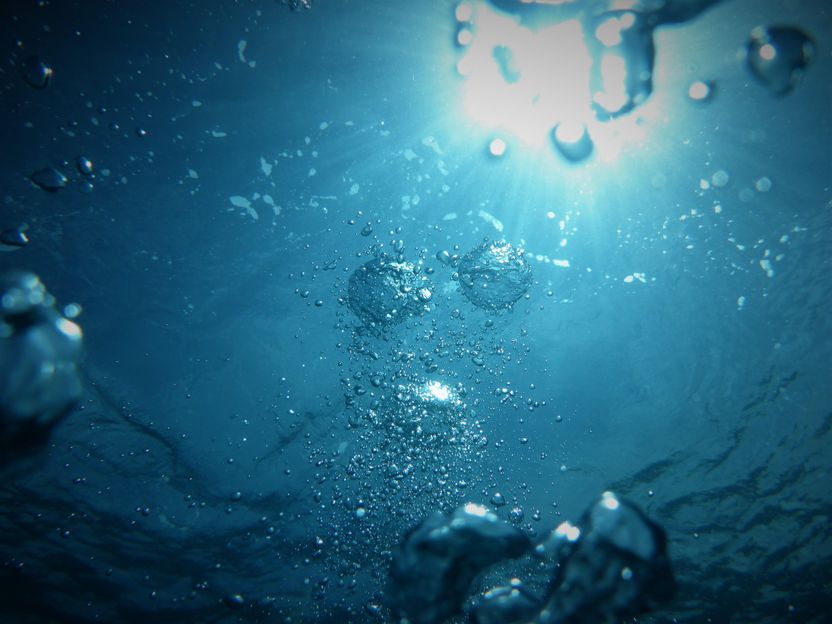Graphene in zero G promises success in space
In a successful collaboration between the graphene Flagship and the European Space Agency, experiments testing graphene for two different space-related applications have shown extremely promising results. Based on these results, the Flagship are continuing to develop graphene devices for use in space.

The airplane in which Flagship researchers performed experiment in microgravity. Operated by Novespace, the plane makes special manoeuvres to create zero gravit conditions inside the plane
Graphene Flagship
"Graphene as we know has a lot of opportunities. One of them, recognised early on, is space applications, and this is the first time that graphene has been tested in space-like applications, worldwide," said Prof. Andrea Ferrari (University of Cambridge, UK), Science and Technology Officer of the Graphene Flagship.
Graphene's excellent thermal properties are promising for improving the performance of loop heat pipes, thermal management systems used in aerospace and satellite applications. Graphene could also have a use in space propulsion, due to its lightness and strong interaction with light. The Graphene Flagship tested both these applications in recent experiments in November and December 2017.
The main element of the loop heat pipe is the metallic wick, where heat is transferred from a hot object into a fluid, which cools the system. Two different types of graphene were tested in a collaboration between the Microgravity Research Centre, Université libre de Bruxelles, Belgium; the Cambridge Graphene Centre, University of Cambridge, UK; the Institute for Organic Synthesis and Photoreactivity and the Institute for Microelectronics and Microsystems, both at the National Research Council of Italy (CNR), Italy; and industry partner Leonardo Spa, Italy, a global leader in aerospace, operating in space systems and high-tech instrument manufacturing and in the management of launch and in-orbit services and satellite services.
"We are aiming at an increased lifetime and an improved autonomy of the satellites and space probes. By adding graphene, we will have a more reliable loop heat pipe, capable to operate autonomously in space," said Dr Marco Molina, Chief Technical Officer of Leonardo's space line of business.
After excellent results in laboratory tests, the wicks for the loop heat pipes were tested in two ESA parabolic flight campaigns in November and December. "We have good tests done on earth in the lab, and now of course because the applications will be in satellites, we needed to see how the wicks perform in low gravity conditions and also in hypergravity conditions, to simulate a satellite launch," added Prof Ferrari.
"It was amazing, the feeling is incredible and its extremely interesting to do experiments in these kinds of conditions but also to enjoy the free-floating zone. The whole experience was really great," said Vanja Miskovic, a student at Université libre de Bruxelles who performed the experiment in microgravity during a parabolic flight operated by Novespace.
The results of the parabolic flight confirm the improvements to the wick, and the Flagship will continue to develop the graphene-based heat pipes towards a commercial product. "I think this is a very nice example of how the Flagship is working. Bringing together three academic partners and one big industry with a clearly defined goal for an application," said Vincenzo Palermo (CNR), Vice-Director of the Graphene Flagship. "At the moment, we have tested the principle and the core of the device. The next step will be to optimise the whole device, and have a full heat pipe that can go in a satellite."
Testing graphene space-propulsion potential, a team of PhD students from Delft Technical University (TU Delft), Netherlands participated in ESA's Drop Your Thesis! campaign, which offers students the chance to perform an experiment in microgravity at the ZARM Drop Tower in Bremen, Germany. To create extreme microgravity conditions, down to one millionth of the Earth's gravitational force, a capsule containing the experiment is catapulted up and down the 146 metre tower, leading to 9.3 seconds of weightlessness. The TU Delft Space Institute, Netherlands, also provided support to the GrapheneX project.
The team - named GrapheneX - designed and built an experiment to test graphene for use in solar sails, using free-floating graphene membranes provided by Flagship partner Graphenea. The idea was to test how the graphene membranes would behave under radiation pressure from lasers. In total, the experiment ran five times over 13-17 November 2017.
"Our experiment is like a complex 'clockwork' where every component has to go off seamlessly at the right time" said Rocco Gaudenzi, a member of the GrapheneX team. "It does not often happen that you have to build up such a clockwork from scratch, and you cannot test it in real conditions but during the launch itself."
The team worked hard to make the experiment successful. "Despite the initial technical difficulties, we managed to quickly figure out what was going on, fix the issues and get back on track. We are very happy with the results of the experiment as we observed laser-induced motion of a graphene light sail, and most importantly we had a great experience!" said Davide Stefani, GrapheneX team member.
Santiago J. Cartamil-Bueno, GrapheneX team leader, expressed that both the experience and the results were valuable to the team. "The most important lesson is that always something will happen, and you need to be ready to adapt or to change," he said. "I think at the end of the day, it's about the experience; you just need to create new challenges and learn from them, and be ready to grab more experience and go to the next level."
Though the GrapheneX experiment is now finished, the team is considering further tests as part of a new and ambitious research project, to continue exploring the influence of radiation pressure on graphene light sails.
The results of the two projects demonstrate graphene's versatility and are the first step towards expanding the frontiers of graphene research.
Other news from the department science
Most read news
More news from our other portals
See the theme worlds for related content
Topic world Synthesis
Chemical synthesis is at the heart of modern chemistry and enables the targeted production of molecules with specific properties. By combining starting materials in defined reaction conditions, chemists can create a wide range of compounds, from simple molecules to complex active ingredients.

Topic world Synthesis
Chemical synthesis is at the heart of modern chemistry and enables the targeted production of molecules with specific properties. By combining starting materials in defined reaction conditions, chemists can create a wide range of compounds, from simple molecules to complex active ingredients.































































